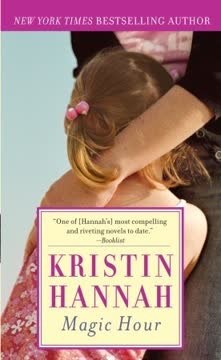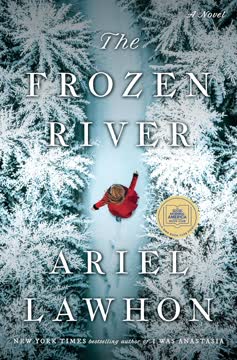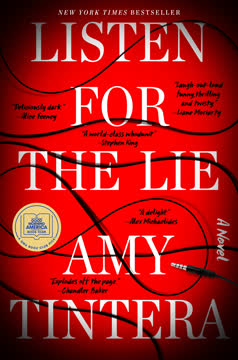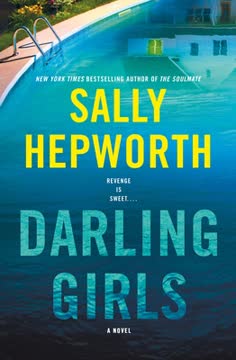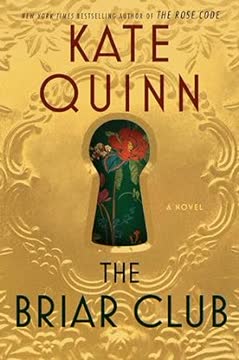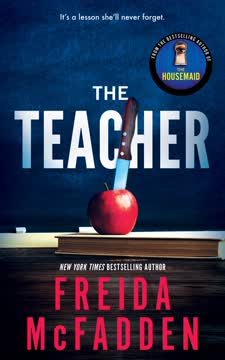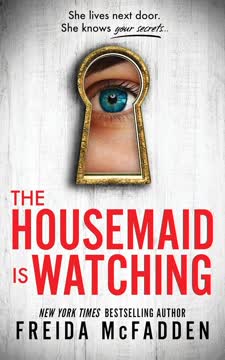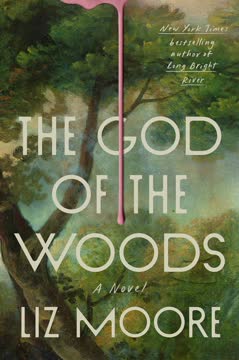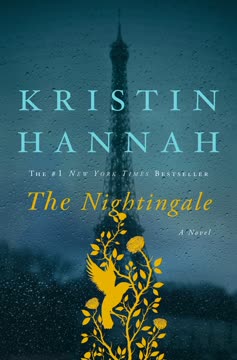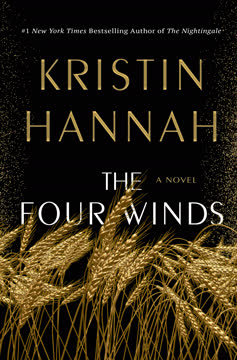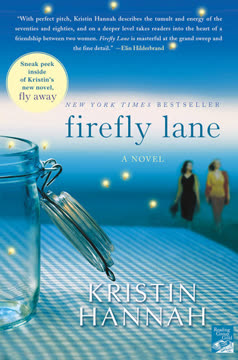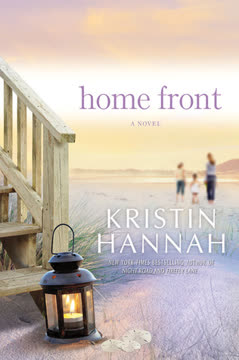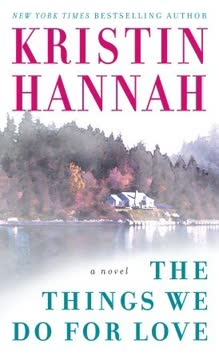Plot Summary
Scandal and Smoke
Julia Cates, a renowned child psychiatrist in Los Angeles, is engulfed in scandal after a patient commits a violent act. The media frenzy and public blame threaten her career and self-worth. Isolated and haunted by guilt, Julia is forced to step away from her practice, questioning her ability to help anyone again. Meanwhile, her estranged sister Ellie, the police chief in their small Pacific Northwest hometown of Rain Valley, faces a mystery that will soon draw Julia back home.
The Wild Girl Appears
Rain Valley is stunned when a filthy, mute, and wild little girl emerges from the forest, clutching a wolf pup. The townspeople are both fascinated and fearful, and Ellie, unaccustomed to real crime, must figure out how to help this traumatized child. The girl's animalistic behavior and silence baffle everyone, and her origins are a mystery. Ellie realizes she needs her sister's expertise and calls Julia for help.
Sisters Reunited
Julia returns to Rain Valley, carrying the weight of her professional disgrace and unresolved family tensions. The sisters' relationship is strained by old wounds—Ellie's popularity and Julia's sense of being the outsider. Yet, the crisis of the wild girl forces them to work together, rekindling their bond and challenging them to confront their shared history and differences.
The Child in the Woods
Julia begins her work with the girl, who is terrified, nonverbal, and reacts violently to certain objects. The child's scars and behaviors suggest years of abuse and isolation. The town rallies to protect her, but the media's interest grows. Julia's professional skills are tested as she tries to reach the girl, while Ellie leads a search for her identity, combing through missing children reports and fielding desperate parents.
Unlocking Silence
Julia employs patience, empathy, and creative techniques to connect with the girl, who is eventually called "Alice." Small breakthroughs occur: Alice mimics words, shows curiosity, and forms a tentative attachment to Julia. The process is slow and fraught with setbacks, but Julia's persistence and compassion begin to draw Alice out of her shell, revealing her intelligence and longing for connection.
The Town's Secret Pact
As national media and authorities descend, Rain Valley's residents form a secret pact to shield Alice and Julia from exploitation. The town's quirky characters—led by Ellie and her friends—coordinate efforts to mislead outsiders and provide a safe haven. This collective action highlights the power of community and the lengths people will go to protect the vulnerable.
The Language of Trust
Julia's therapeutic breakthroughs accelerate as Alice learns to trust her. Through mimicry, play, and gentle persistence, Alice begins to speak, first in single words, then in simple phrases. The process is emotional for both, as Alice's first words—"stay," "please"—signal her desire for safety and belonging. Julia's confidence as a healer is slowly restored, and the town witnesses a transformation.
Breakthroughs and Setbacks
Alice's development is marked by both triumphs and regressions. She learns basic skills, forms attachments, and even begins to play with other children. Yet, triggers from her past—certain objects, loud noises, or the threat of separation—cause her to panic or withdraw. Julia and Ellie struggle with the emotional toll, fearing that any misstep could undo Alice's fragile progress.
The Press Descends
The story of the "wolf girl" and her psychiatrist becomes a national sensation. Julia is thrust back into the media spotlight, her past failures dredged up alongside her current work. The pressure mounts as authorities and experts question her methods and vie for control of Alice's case. Julia must defend her right to care for Alice, even as her own reputation and the child's well-being hang in the balance.
Naming Alice
As Alice's language skills grow, Julia encourages her to choose a name. The act of naming herself "Alice" is a pivotal moment, symbolizing her emergence from trauma and her claim to a new identity. The bond between Julia and Alice deepens, resembling that of mother and daughter. Yet, the question of Alice's true origins and family remains unresolved, casting a shadow over their happiness.
The Wolf and the Girl
Alice's connection to her wolf pup is both literal and symbolic—a link to her survival in the wild and her capacity for loyalty and love. The town arranges for Alice to visit the wolf at a sanctuary, a reunion that brings joy and closure. The wolf's release into the wild mirrors Alice's own journey toward freedom and integration into human society.
Healing and Attachment
Julia, Ellie, and the town help Alice adjust to a life of safety, routine, and affection. Holidays and milestones—Thanksgiving, Christmas, the first day of school—become opportunities for Alice to experience normalcy and joy. Julia's own healing is intertwined with Alice's, as she finds love with Max, the town doctor, and rebuilds her sense of purpose and belonging.
The Father's Return
Just as Alice seems settled, a man arrives claiming to be her father, George Azelle. DNA tests confirm his identity, and the legal system favors reunification. George's past is clouded by scandal—he was accused (and acquitted) of murdering Alice's mother. The revelation threatens to tear Alice from Julia and the only home she's ever known.
The Courtroom Battle
A fierce custody battle ensues. Julia fights to keep Alice, arguing that the child's psychological well-being depends on stability and attachment. George, seeking redemption and reunion, insists on his rights as a father. The court must weigh biological ties against the bonds of love and healing. The town rallies behind Julia, but the law is not on her side.
Into the Deep Woods
In a desperate bid to uncover the truth of Alice's past, Julia, Ellie, and George follow Alice into the deep woods, hoping she can lead them to evidence of what happened to her and her mother. The journey is harrowing, as Alice confronts her trauma and the group uncovers the site of her captivity—a place of horror and survival.
The Truth Unearthed
The search uncovers the remains of Alice's mother and evidence that exonerates George. The true perpetrator—a serial predator—had held Alice and her mother captive. The discovery brings closure to the mystery and vindication for George, but it also forces everyone to confront the limits of justice and the enduring scars of trauma.
Letting Go
With the truth revealed, George is legally entitled to custody. Julia must make the agonizing decision to let Alice go, believing it is in the child's best interest. The separation is heartbreaking for both, as Alice regresses and Julia is consumed by grief. Yet, the act of letting go is also an act of love, honoring Alice's right to her own story and future.
Homecoming and New Beginnings
Unable to adjust, Alice returns to Julia, and George recognizes that her true home is with the woman who saved her. Julia adopts Alice, and together they build a new life in Rain Valley. The town, once fractured by tragedy and suspicion, is united by hope and resilience. Julia finds love with Max, Ellie finds happiness with Cal, and Alice—now truly "real"—begins her journey as a beloved daughter and a survivor.
Characters
Julia Cates
Julia is a brilliant child psychiatrist whose career is derailed by a public tragedy. Her deep empathy for children stems from her own childhood loneliness and outsider status. Returning to Rain Valley, she is forced to confront her own vulnerabilities, rebuild her confidence, and redefine her sense of purpose. Her relationship with Alice is both professional and maternal, and through their bond, Julia finds healing, love, and a new beginning.
Ellie Barton
Ellie is Julia's older sister, the charismatic and capable police chief of Rain Valley. Outwardly confident and beloved by the community, Ellie struggles with her own insecurities, failed relationships, and longing for family. Her journey is one of self-awareness, as she learns to balance her need for control with vulnerability, and ultimately finds love and fulfillment with her longtime friend Cal.
Alice/Brittany Azelle
Alice, later revealed as Brittany Azelle, is a young girl found living wild in the forest, traumatized and nonverbal. Her journey from animalistic fear to human connection is the emotional heart of the novel. Alice's psychological scars run deep—she is terrified of abandonment, struggles with language, and is triggered by reminders of her captivity. Her attachment to Julia is both a lifeline and a source of pain, as she must eventually face her past and her biological family.
Max Cerrasin
Max is the town doctor, a man with his own tragic past—the loss of his son and marriage. His attraction to Julia is immediate, but he is cautious, having been broken by grief. Max's role is both as a medical ally in Alice's care and as Julia's emotional anchor. Through their relationship, both find the courage to love again and embrace the possibility of happiness.
George Azelle
George is Alice's biological father, a man wrongfully accused of murdering his wife and daughter. His return upends the fragile stability Julia and Alice have built. George is a study in ambiguity—guilty of past failings but ultimately innocent of the worst crime. His struggle to reclaim his daughter is both a quest for justice and a test of his capacity for selfless love.
Peanut (Penelope Nutter)
Peanut is Ellie's best friend and the town's patrol clerk. Her humor, warmth, and down-to-earth wisdom provide levity and support throughout the story. Peanut's own struggles with self-image and family add depth to her character, and her unwavering loyalty to Ellie and Julia exemplifies the power of friendship.
Cal Wallace
Cal is Ellie's childhood friend and eventual romantic partner. A gentle, reliable presence, Cal has endured his own disappointments and heartbreaks. His love for Ellie is patient and enduring, and his role as a father and community member highlights the novel's themes of resilience and second chances.
The Town of Rain Valley
The quirky, close-knit town is more than a backdrop—it is an active participant in the story. The townspeople's collective actions, gossip, and support shape the narrative, reflecting both the best and worst of small-town life. Their willingness to protect Alice and Julia underscores the importance of community in healing and justice.
The Wolf
The wolf pup found with Alice is both a literal companion and a symbol of her wildness, resilience, and capacity for attachment. The wolf's journey from captivity to freedom mirrors Alice's own transformation.
Zoë Azelle
Though deceased, Zoë's presence haunts the narrative. Her fate is central to the mystery of Alice's past, and her love and suffering are echoed in her daughter's trauma and healing.
Plot Devices
Dual Narratives of Healing and Mystery
The novel intertwines Julia's personal redemption with Alice's psychological recovery, using their relationship as the engine for both. The mystery of Alice's identity and past is gradually unraveled through investigation, therapy, and community action, creating suspense and emotional investment.
The Feral Child Trope
Alice's wildness is both a literal and metaphorical device, raising questions about what it means to be human, the power of environment, and the possibility of healing after extreme trauma. Her journey from animalistic survival to selfhood is a modern take on classic "wild child" stories.
Small-Town Community as Shield
The town's decision to protect Alice and Julia from outside forces—media, authorities, exploiters—serves as both a plot device and a commentary on the power of community. This device allows for moments of humor, tension, and solidarity, and highlights the contrast between public spectacle and private healing.
Legal and Ethical Dilemmas
The custody battle over Alice/Brittany forces characters and readers to confront difficult questions: What makes someone a parent? Is biology more important than love and attachment? The legal proceedings, with their shifting sympathies and moral ambiguities, drive the story's climax and resolution.
Symbolism of the Wolf and the Forest
The forest represents both the site of Alice's trauma and her survival. The wolf is a symbol of her wildness, loyalty, and the possibility of returning to the world. The recurring imagery of the woods, animals, and weather underscores themes of transformation, resilience, and the search for home.
Foreshadowing and Flashbacks
The novel uses foreshadowing—Alice's triggers, scars, and behaviors—to hint at her history, while flashbacks and recovered memories provide key information at pivotal moments. This structure maintains suspense and emotional engagement.
Analysis
Magic Hour is a moving exploration of trauma, healing, and the meaning of family. Kristin Hannah uses the story of a feral child and a disgraced psychiatrist to examine how love, patience, and community can restore what violence and neglect have broken. The novel challenges the primacy of biological ties, arguing that true parenthood is defined by presence, sacrifice, and unconditional love. Through Alice's journey from wildness to selfhood, and Julia's from shame to redemption, the book affirms the resilience of the human spirit and the transformative power of connection. In a world obsessed with spectacle and scandal, Magic Hour reminds us that real miracles happen quietly, in the magic hour between darkness and light, when people choose to stay, to love, and to believe in second chances.
Last updated:
FAQ
Synopsis & Basic Details
What is Magic Hour about?
- A psychiatrist's redemption journey: Julia Cates, disgraced after a patient's violent act, finds a chance at professional and personal redemption when she returns to her small hometown of Rain Valley. She is called upon to help "Alice," a feral, nonverbal child found in the deep woods.
- Unraveling a child's mystery: The story follows Julia's empathetic and unconventional therapeutic approach to connect with Alice, slowly unlocking her language and uncovering the horrific trauma of her past, including her captivity and the fate of her biological mother.
- The meaning of family and home: Amidst media scrutiny and a custody battle with Alice's biological father, the novel explores themes of chosen family, the resilience of the human spirit, and the transformative power of unconditional love and community in healing profound emotional wounds.
Why should I read Magic Hour?
- Deep emotional resonance: The novel delves into the raw psychological impact of trauma and loss, offering a poignant exploration of healing, not just for the feral child Alice, but also for the wounded protagonist, Julia, and other characters grappling with their pasts.
- Compelling character arcs: Readers will be drawn into the complex journeys of Julia, Ellie, and Alice, witnessing their growth from isolation and pain to connection and self-acceptance, making for a truly satisfying and inspiring read.
- Thought-provoking ethical dilemmas: The story raises profound questions about nature vs. nurture, the definition of family, and the legal and ethical responsibilities of care, prompting readers to consider what truly constitutes a "home" and who has the right to define it.
What is the background of Magic Hour?
- Pacific Northwest setting: The story is deeply rooted in the atmospheric Olympic National Forest and the fictional town of Rain Valley, where the constant rain, dense woods, and isolated community shape the characters' experiences and symbolize both refuge and hidden dangers.
- Exploration of "feral children": The novel draws on the real-world phenomenon and historical accounts of "feral children" (like Victor of Aveyron or Genie), using Julia's research into these cases to ground Alice's extraordinary circumstances in a scientific, albeit rare, context.
- Critique of media sensationalism: The narrative highlights the intrusive and often damaging role of the media in high-profile cases, contrasting the public's hunger for spectacle with the quiet, painstaking work of healing and the community's desire for privacy and protection.
What are the most memorable quotes in Magic Hour?
- "Real isn't how you are made... It's a thing that happens to you.": This epigraph from The Velveteen Rabbit profoundly foreshadows Alice's journey to selfhood and emotional authenticity, emphasizing that true "realness" is forged through love and experience, often painful.
- "Sometimes God breaks your fucking back.": Max Cerrasin's raw, honest admission to Julia reveals his own deep, unhealed grief and offers a stark counterpoint to platitudes, forging an immediate, empathetic connection between them through shared suffering. This quote highlights the novel's unflinching look at pain.
- "All or nothing.": Julia's declaration about her approach to love and life, echoed by Max, encapsulates a central theme of the novel: the courage required to commit fully, whether to a relationship, a patient, or a new life, despite the inherent risks of heartbreak and loss.
What writing style, narrative choices, and literary techniques does Kristin Hannah use?
- Empathetic and emotional prose: Hannah employs a direct, accessible writing style that prioritizes emotional depth and character interiority, drawing readers deeply into the characters' feelings and struggles. Her descriptions often evoke sensory details, particularly the damp, green atmosphere of Rain Valley.
- Alternating perspectives and internal monologues: The narrative frequently shifts between the third-person limited perspectives of Julia, Ellie, Max, and even Alice (as "Girl"), providing a multi-faceted view of events and allowing readers intimate access to each character's unspoken thoughts, fears, and motivations.
- Symbolism and motif repetition: Hannah subtly weaves recurring symbols like water, light, animals, and the Cates' family home to underscore thematic elements such as healing, transformation, and the search for belonging. The "Magic Hour" itself becomes a powerful motif for moments of clarity and hope.
Hidden Details & Subtle Connections
What seemingly minor details add significant meaning later in Magic Hour?
- Julia's initial court case details: The judge's ruling in Tarasoff v. Regents of University of California and the plaintiff's lawyer's argument about Julia's "duty to warn" or "commit" Amber Zuniga, though seemingly a plot device to free Julia, subtly foreshadows the later legal battle over Alice and the ethical dilemmas Julia faces regarding Alice's safety versus her freedom. It establishes Julia's professional vulnerability and the public's readiness to assign blame.
- Max's rock climbing hobby: Initially presented as a way for Max to "feel alive" and escape memories, his near-fatal fall and subsequent lack of adrenaline rush in Chapter 16 subtly reveal that his previous coping mechanism is no longer effective. This foreshadows his emotional breakthrough and willingness to embrace "all or nothing" love with Julia, finding true aliveness in connection rather than risk.
- Alice's fear of shiny metal: Julia's early observation that Alice screams at "bright and shiny metal objects" and the specific mention of the "shiny ball" on the doorknob and the "silver stake" in the woods, subtly links to the ligature marks on Alice's ankle. This detail later confirms her captivity and the use of chains or restraints, revealing a deeper layer of her trauma and the source of her fear.
How does the novel use subtle foreshadowing and callbacks to enrich the narrative?
- Alice's animalistic behaviors: Early descriptions of Alice moving "like a cat," sniffing the air, and howling are not just character traits but subtle hints at her "feral" upbringing. This foreshadows Julia's later research into wild children and the eventual discovery of Alice's life in the woods with the wolf, making her extraordinary past believable.
- Ellie's "Magic Hour" observation: Ellie's initial thought that the sudden appearance of sunlight after rain is "Magic Hour" (Chapter 2) subtly foreshadows the novel's title and its thematic significance. It suggests that moments of unexpected beauty and clarity can emerge from difficult circumstances, mirroring Alice's transformation and Julia's redemption.
- The "Dead Wrong" newspaper headline: The headline about Julia's case (Chapter 3) serves as a constant callback to her professional disgrace and public perception. It reinforces her deep-seated guilt and fear of failure, making her eventual decision to publicly defend Alice and risk further ruin a more profound act of courage and self-acceptance.
What unexpected character connections or mirrored relationships are explored?
- Julia and Max's shared grief: Beyond their romantic attraction, Julia and Max are unexpectedly connected by the profound loss of a child (Julia's patient Amber, Max's son Danny). Max's raw admission, "Sometimes God breaks your fucking back," and his later revelation about Danny, creates a deep, empathetic bond that transcends superficial flirtation and allows them to heal together.
- Ellie and Cal's evolving relationship: Their long-standing friendship, marked by Ellie's blindness to Cal's deeper feelings and his quiet devotion, mirrors the novel's theme of overlooked love. Cal's revelation of Lisa leaving him and Ellie's subsequent realization of her own selfishness and Cal's steadfastness transforms their dynamic from platonic to romantic, highlighting a "second chance" for both.
- Alice's mirroring of Julia's emotional state: Alice's ability to sense Julia's sadness ("Jewlee sad?") and offer comfort ("No water," "All better?") demonstrates a profound, almost telepathic connection that transcends verbal language. This unexpected empathy from a traumatized child helps Julia confront her own buried grief and reminds her of her inherent worth as a healer.
Who are the most significant supporting characters beyond the main trio, and why?
- The Grimm sisters (Daisy, Marigold, Violet): These three ex-teachers embody the quirky, gossipy, yet fiercely protective spirit of Rain Valley. Their initial skepticism and later unwavering support, particularly in forming the "secret pact" to mislead the media, highlight the power of small-town community as a shield against external threats. Daisy's constant carrying of her late husband's ashes adds a touch of morbid humor and a reminder of enduring grief.
- Mort Elzik: The local reporter for the Rain Valley Gazette serves as a foil to Ellie and Julia, representing the sensationalist and often irresponsible side of media. His "Mowgli lives" headline and later attempts to expose Julia's past drive much of the external conflict, forcing the characters to make difficult choices about publicity and privacy.
- Peanut (Penelope Nutter): Ellie's best friend and patrol clerk, Peanut provides crucial comic relief and unwavering loyalty. Her down-to-earth advice, struggles with weight and smoking, and eventual role in helping Ellie confront her own selfishness, ground the more dramatic elements of the story in relatable human experience and highlight the strength of female friendship.
Psychological, Emotional, & Relational Analysis
What are some unspoken motivations of the characters?
- Julia's quest for redemption: Beyond helping Alice, Julia is driven by a desperate need to atone for her perceived failure with Amber Zuniga. Her relentless work with Alice is an unspoken attempt to prove her competence and worth, not just to the world, but to herself, as evidenced by her internal monologue: "Am I good enough? Or worse: What am I missing this time?"
- Ellie's longing for a family: Ellie's outwardly confident demeanor masks a deep-seated desire for a stable, loving family, a dream she feels has eluded her through two failed marriages. Her fierce protectiveness of Alice and her quiet observation of Julia's maternal bond reveal her unspoken yearning for the domestic fulfillment she associates with her parents' idealized marriage.
- Max's avoidance of deep connection: Max's "player" persona and preference for extreme sports are unspoken coping mechanisms to avoid the profound pain of losing his son, Danny. His initial reluctance to engage emotionally with Julia or Alice stems from a fear of loving "all or nothing" again, as it previously led to unbearable loss.
What psychological complexities do the characters exhibit?
- Julia's self-blame and perfectionism: Julia's internal struggle is marked by intense self-recrimination over Amber's tragedy, leading to a fragile self-confidence. Her perfectionism, once a strength, becomes a vulnerability, making her terrified of making another mistake and hindering her ability to trust her instincts, especially when facing external criticism.
- Ellie's facade of strength: Ellie, the beloved "Homecoming Queen" and police chief, projects an image of unwavering strength and competence. However, her internal monologues reveal deep insecurities about her intelligence ("only slightly smarter than a pet rock"), her failed relationships, and her fear of vulnerability, which she gradually confronts through her bond with Julia and Cal.
- Alice's trauma-induced mutism and regression: Alice's psychological complexity lies in her profound trauma, which manifests as elective mutism, animalistic behaviors, and a deep fear of abandonment. Her regressions (e.g., howling, self-mutilation) are not just setbacks but desperate attempts to communicate overwhelming fear and pain when verbal language fails her.
What are the major emotional turning points?
- Alice's first word, "Stay": This moment is a pivotal emotional turning point, signifying Alice's nascent trust and desire for connection, and Julia's first tangible success in breaking through Alice's silence. It reignites Julia's hope and validates her therapeutic approach, shifting her focus from past failures to present possibilities.
- Julia's decision to fight for Alice's custody: Despite her professional vulnerability and the media's scrutiny, Julia's unwavering commitment to Alice's well-being, culminating in her decision to pursue adoption, marks a profound emotional shift. It signifies her prioritizing Alice's needs over her own reputation and her embrace of a maternal role.
- George Azelle's concession of custody: George's heartbreaking realization that Alice "is not my little girl anymore" and his decision to return her to Julia, despite his legal right to custody, is a major emotional turning point. It demonstrates a selfless act of love, prioritizing Alice's emotional stability over his own desire for reunification, and offers a nuanced portrayal of his character.
How do relationship dynamics evolve?
- Julia and Ellie's sisterly bond: Their relationship transforms from one strained by childhood rivalry and unspoken resentments ("the weird one" vs. "Miss Popular") to a deep, mutually supportive partnership. Ellie's unwavering belief in Julia's abilities and Julia's eventual recognition of Ellie's own vulnerabilities ("So, they had something else in common after all") forge a stronger, more authentic connection.
- Julia and Max's romantic connection: Their relationship evolves from initial flirtation and cautious attraction, complicated by their respective past traumas, into a profound and healing love. Max's willingness to share his grief over Danny and Julia's acceptance of his vulnerability allows them to build a foundation of trust and mutual support, culminating in his proposal.
- Alice's attachment to Julia: Alice's relationship with Julia progresses from fear and resistance to deep trust and maternal attachment. Her gradual acceptance of physical touch, her first words, and her eventual calling Julia "Jewlee Mommy" illustrate the profound power of consistent, unconditional love in healing severe trauma and forming a new family unit.
Symbolism & Motifs
What is the symbolism of "Magic Hour" itself in the novel?
- A fleeting moment of clarity and beauty: The "Magic Hour" is literally the time when sunlight, softened by rain and approaching night, casts an impossibly beautiful glow. Symbolically, it represents those rare, precious moments of breakthrough and understanding that emerge from darkness and chaos, particularly in Alice's healing journey and Julia's redemption.
- Hope emerging from despair: The phrase encapsulates the novel's overarching theme of finding hope and new beginnings even after profound tragedy. Just as the landscape is transformed by light after a storm, characters find moments of grace and connection that illuminate their path forward.
- The transformative power of connection: The "Magic Hour" often coincides with pivotal moments of connection, such as Alice's first appearance or Julia's breakthroughs with her. It suggests that true magic lies in human relationships and the ability to see beauty and potential in the most unexpected places and people.
How does the motif of water and rain reflect the emotional landscape of Rain Valley and its characters?
- Constant presence and emotional backdrop: The pervasive rain in Rain Valley is more than just weather; it's a constant, almost character-like presence that mirrors the characters' internal emotional states. It can be "comforting mist," symbolizing quiet healing, or a "constant drizzle" reflecting persistent sadness and weariness.
- Cleansing and renewal: Water, particularly rain, often symbolizes cleansing and the washing away of past pain. Alice's first bath, where she explores water with fascination, marks a step in her physical and emotional purification from her traumatic past, hinting at the possibility of a fresh start.
- Unseen depths and hidden emotions: The "invisible rain" and the "roaring gray surf" of the Pacific Ocean symbolize the unseen depths of characters' emotions and the powerful, often turbulent, undercurrents of their inner lives. Just as the ocean's roar is a constant, so too are the unspoken griefs and fears that shape the characters.
What is the significance of Alice's connection to animals and the natural world?
- Survival and primal instinct: Alice's initial survival in the wild, her animalistic behaviors (sniffing, howling, moving on all fours), and her bond with the wolf pup symbolize her primal connection to nature as a means of survival. This highlights the "nature vs. nurture" theme, suggesting that in the absence of human socialization, she adapted to her environment.
- Uncorrupted innocence and intuitive understanding: Alice's ability to communicate with birds and her intuitive understanding of animals (like the dogs) suggests a purity and uncorrupted innocence. This connection allows her to perceive emotions and truths that human language often obscures, making her a unique lens through which the "civilized" world is viewed.
- A bridge to healing and self-discovery: The wolf, in particular, serves as a symbolic bridge between Alice's wild past and her human future. Her reunion with the wolf provides emotional closure, and its eventual release into the wild mirrors Alice's own journey towards integration into human society while retaining her unique essence.
Interpretation & Debate
Which aspects of Alice's "wildness" remain ambiguous or open to interpretation?
- The extent of her "feral" upbringing: While Julia's research points to Alice being a "wild child," the exact duration and circumstances of her time in the woods remain somewhat ambiguous. The novel suggests she was with people for her first two years, but the depth of her animalistic adaptation and her lack of language skills leave room for debate on how truly "feral" she was versus severely neglected and traumatized.
- Her unique connection to animals: Alice's ability to mimic birdsong perfectly and seemingly communicate with animals, particularly the wolf, is presented with a touch of magical realism. Readers can interpret this as either a literal, almost supernatural ability developed in isolation, or as a highly developed observational and mimicry skill born of necessity and a deep attunement to her environment.
- The source of her "realness": The epigraph from The Velveteen Rabbit posits that "Real isn't how you are made... It's a thing that happens to you." Alice's journey to become "real" is tied to her human connections, but her "wildness" also contributes to her unique authenticity. The novel leaves it open whether her "realness" is solely a product of human love or if her untamed spirit is an integral part of her true self.
What are some debatable, controversial scenes or moments in Magic Hour?
- The decision to take Alice back to the crime scene: Julia and Ellie's choice to bring Alice back to the site of her captivity in the woods is highly debatable. While it leads to crucial
Synopsis & Basic Details
What is Magic Hour about?
- A psychiatrist's redemption journey: Julia Cates, disgraced after a patient's violent act, finds a chance at professional and personal redemption when she returns to her small hometown of Rain Valley. She is called upon to help "Alice," a feral, nonverbal child found in the deep woods.
- Unraveling a child's mystery: The story follows Julia's empathetic and unconventional therapeutic approach to connect with Alice, slowly unlocking her language and uncovering the horrific trauma of her past, including her captivity and the fate of her biological mother.
- The meaning of family and home: Amidst media scrutiny and a custody battle with Alice's biological father, the novel explores themes of chosen family, the resilience of the human spirit, and the transformative power of unconditional love and community in healing profound emotional wounds.
Why should I read Magic Hour?
- Deep emotional resonance: The novel delves into the raw psychological impact of trauma and loss, offering a poignant exploration of healing, not just for the feral child Alice, but also for the wounded protagonist, Julia, and other characters grappling with their pasts.
- Compelling character arcs: Readers will be drawn into the complex journeys of Julia, Ellie, and Alice, witnessing their growth from isolation and pain to connection and self-acceptance, making for a truly satisfying and inspiring read.
- Thought-provoking ethical dilemmas: The story raises profound questions about nature vs. nurture, the definition of family, and the legal and ethical responsibilities of care, prompting readers to consider what truly constitutes a "home" and who has the right to define it.
What is the background of Magic Hour?
- Pacific Northwest setting: The story is deeply rooted in the atmospheric Olympic National Forest and the fictional town of Rain Valley, where the constant rain, dense woods, and isolated community shape the characters' experiences and symbolize both
Review Summary
Magic Hour receives mixed reviews, with ratings ranging from 1 to 5 stars. Many readers praise the emotional depth, compelling characters, and heartwarming story about a feral child's rehabilitation. Critics cite issues with research accuracy, particularly regarding autism and child welfare. Some find the writing cliché-ridden and predictable, while others are moved to tears. The book's exploration of family relationships, small-town life, and personal growth resonates with many readers. Overall, it's seen as an engaging, if sometimes flawed, novel that showcases Hannah's storytelling abilities.
Similar Books
Download PDF
Download EPUB
.epub digital book format is ideal for reading ebooks on phones, tablets, and e-readers.
